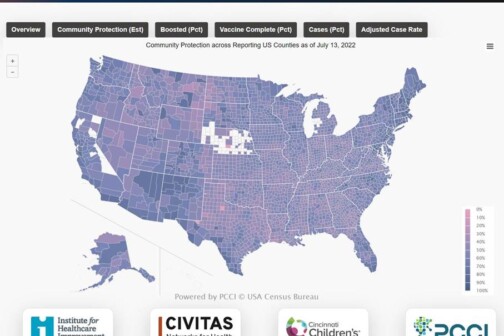Your waste is no longer a total waste—it’s actually science. Dallas Water Utilities, Dallas County Health and Human Services, and the Centers for Disease Control and Prevention are teaming up to look for the COVID-19 virus in Dallas’ poo. The organizations are sampling, testing, and mapping results from the wastewater.
Dallas Water Utilities and Dallas County Health are part of the wastewater surveillance system organized by the CDC. Many communities—the most notable being Houston—have been testing sewage for months. When the CDC asked for more regions to take the plunge, Dallas County raised its hand. Beginning last month, a spokesman for Dallas Water Utilities said, wastewater samples are taken twice a week from the Central Wastewater Treatment Plant in southern Dallas. (You see it on your right when you are heading south on I-45, near Bonton.) Results are posted on the COVID Data Tracker on the CDC’s website.
The testing is very effective. It can parse the waste of 100,000 people and detect evidence of the virus even if it is only present in a couple of them.
The job is not an easy one. According to some very intrepid (and likely stinky) reporting from NPR, the virus likes to attach to fatty surfaces, so samplers have to find solids that gather at the bottom of the treatment tanks. In Dallas, samples are collected on Mondays and Wednesdays; keep those who are removing the samples in your thoughts early each week.
The process is another tool to help detect the presence of a new wave or variant, says Dallas County Medical Director Dr. Philip Huang. Houston made headlines for predicting the winter omicron wave by doing this same testing. Before a single omicron case had been detected in people the Bayou City, scientists found it in eight of Houston’s 39 wastewater plants, foreshadowing the omicron wave that inundated the region. Identifying COVID via wastewater can help a city target certain areas, beef up testing and vaccinations, or remove resources as cases decline.
After the first few tests, Dallas’ wastewater has shown that new infections are holding steady or slightly declining. Of 200,000 Dallasites, one of the city’s sample locations shows a 1 to 9 percent increase in COVID-19 cases over the last 15 days while the other shows a 0 to -9 percent change during that same time period.
Nationwide, the wastewater measurements are concentrated in the Midwest, New York, the Carolinas, Colorado, and California. Houston, Dallas, and El Paso are the only current takers in Texas. Results are mixed around the country, but, in theory, the wastewater testing could reveal a new wave of cases sweeping across the country. It can also predict the wave subsiding even before formal case numbers depict such a trend. I hope this is another tracker we get to forget about in the coming months, but public health officials are praising having another tool to help keep us safe.
D Magazine wants to thank you for your daily contribution to the data. Explore the results of the wastewater tracker here.
Author







